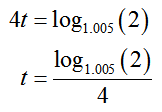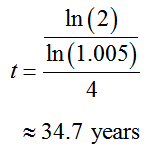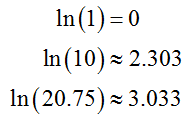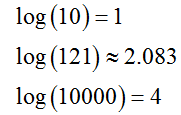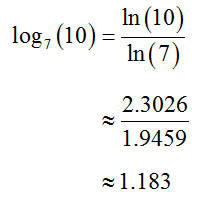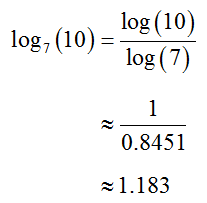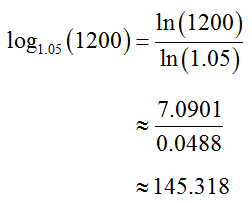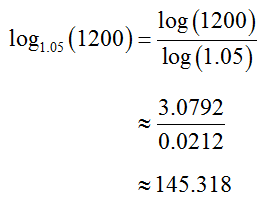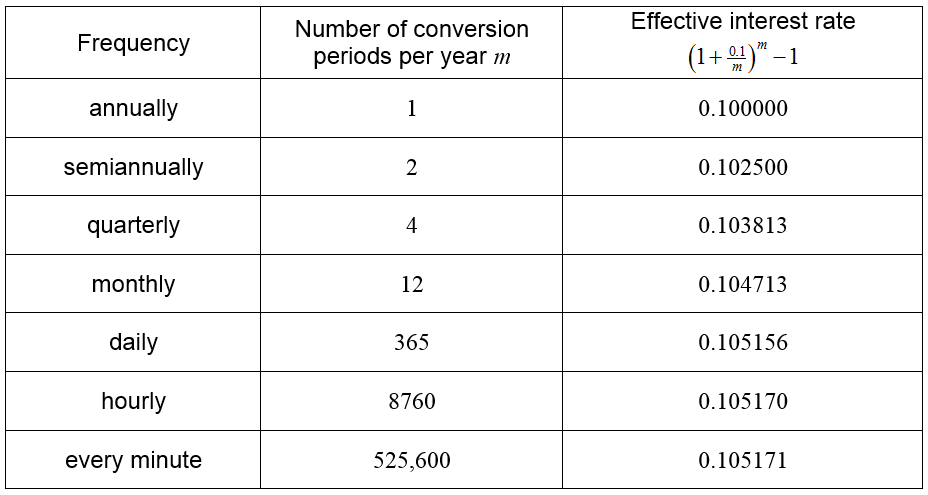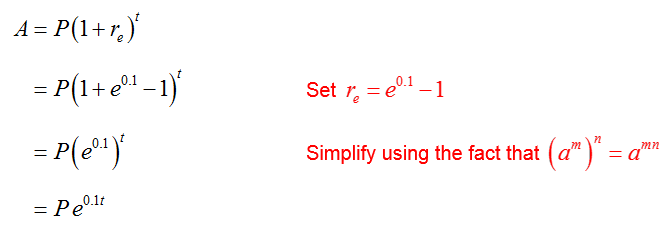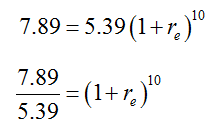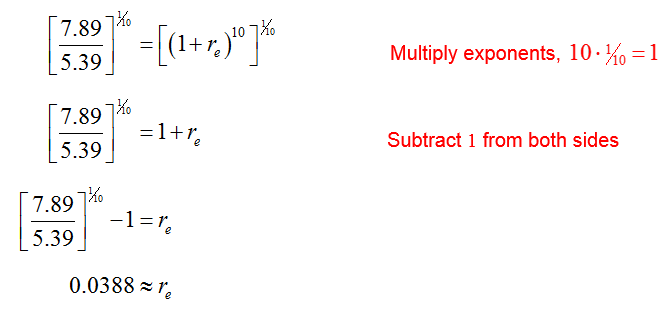How do you solve problems involving using logarithms?
Logarithms are useful for solving exponential equations. An example of an exponential equation is the equation
To solve this equation for the variable x, isolate the term containing the exponential piece. This is done by subtracting 2 from both sides of the equation to give
We remove the variable from the exponent by converting this exponential form to logarithmic form. The logarithmic form is
Divide both sides of the equation by 2 to yield
This is the exact solution to the original exponential equation. We can use this expression to find an approximate solution to as many decimal places as needed. To three decimal, the solution is x ≈ 0.573. If we had worked out the logarithm earlier in the calculation, we would not be able to write down the exact solution. The best practice is to find the exact solution first. Use the exact solution to get an approximate solution.
Example 6 Compound Interest
How long will it take$10,000 to double in an account earning 2% compounded quarterly?
Solution For this problem, we’ll use the Compound Interest Formula
Since we want to know how long it will take, let t represent the time in years. The number of compounding periods is four times the time or n = 4t. The original amount is PV = 10,000 and the future value is double or FV = 20,000. The interest rate per period is . When these values are substituted into the compound interest formula, we get the exponential equation
To solve this equation for t, isolate the exponential factor by dividing both sides by 10,000 to give
Convert this exponential form to logarithm form and divide by 4,
To find an approximate value, use the Change of Base Formula to convert to a natural logarithm (or a common logarithm):
It is interesting to note that the starting amount is irrelevant when doubling. If we started with P dollars and wanted to accumulate 2P at the same interests rate and compounding periods, we would need to solve
This reduces to the same equation as above,
when both sides are divided by P. This means it takes about 37.4 years to double any amount of money at an interest rate of 2% compounded quarterly.
In this example, converting to logarithm form removes the variable from the power in the exponential factor. This makes it easy to solve for the variable. This same strategy is used to solve for other variables in the power of an exponential also.
Example 7 Continuous Exponential Decay
The value of a large piece of equipment depreciates from $125,000 to $50,000 in five years. If the value decreases exponentially, at what continuous rate is the value dropping?
Solution We will model the value V of the equipment at some time t years later with the equation
In this equation, the original value of the equipment is V0. The value is decreasing at a continuous rate of r (as a percent) due to the negative sign in the power. Put the values in this equation to yield
Solve for the rate r by converting to logarithmic form:
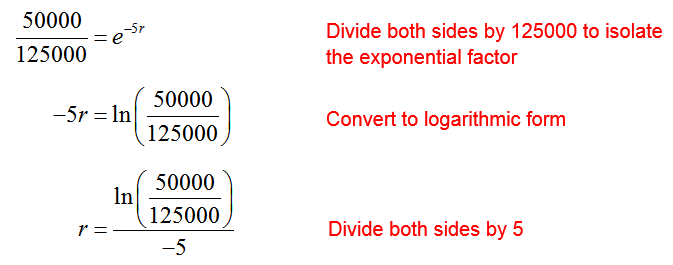
Note that the rate is always given as a percent per some time period. This time period is the same as the units on the variable t.


